I’d like to understand if this is just iPhones or basically most of buttons have a Zener diode connected in parallel.
What is the purpose of the Zener diode in the button here?
What does it do in simplest form, please?

I’d like to understand if this is just iPhones or basically most of buttons have a Zener diode connected in parallel.
What is the purpose of the Zener diode in the button here?
What does it do in simplest form, please?

This is more of a TVS than a Zener (ie optimised for power dissipation than a fixed voltage). It is used to provide esd protection to the IO in question
Differences between TVS diode and Zener diodes, in diagrams and in practice?
As JonRB told you in his answer, that's most probably not a Zener, but a Transient Voltage Suppressor (TVS) diode.
It's difficult to say exactly why it has been put there without knowing to what it is connected (you just state it is in parallel with a button). It would help posting a bigger part of that schematic and telling us what kind of equipment it is.
Therefore, I will just perform an educated guess.
A TVS is a device which acts as an open circuit as long as the voltage across it remains under a given threshold. Once the voltage rises above that threshold, the TVS will start conducting heavily (like a Zener in breakdown, but in both directions), limiting the overvoltage across its terminals.
It is used as a protection device against ESD events or other overvoltage events of impulsive nature.
The key word here is impulsive. TVS diodes are rated for a certain energy. That means that they are able to absorb an impulse of a given energy once in a while and protect the circuit from the voltage spike it would have caused if it weren't for the TVS.
TVS diodes are not meant to work continuously (e.g. as a voltage stabilizer), otherwise they could get damaged irreversibly.
Now, why would you put a TVS across the terminals of a button?
If that button is not insulated enough from the surrounding environment, anyone touching the button could trigger an ESD event, that is an Electro-Static Discharge, during which several thousand volts could reach the terminals of the button and from there, along the connecting wires (or PCB tracks), could reach the sensitive electronics to which the button is probably connected.
That means death to any CMOS digital circuit, for example a microcontroller that must read the state of the button.
ESD events are not the only source of problems. If the button is installed in an industrial apparatus, e.g. on a panel of some machinery, and it is connected to the circuit with long wires, those wires can get part of an Electro-Magnetic Pulse (EMP) generated by nearby heavy electrical equipment (say a big industrial motor) during its operation.
These EMP pulses can be irradiated through space (air) and reach the button wires and induce hundreds of volts in them. Again, well above a safe voltage of a digital line.
Bottom line, that TVS is one of many tricks a designer could use to limit the consequences of transient overvoltage events that could befall that button and the equipment to which it is connected to.